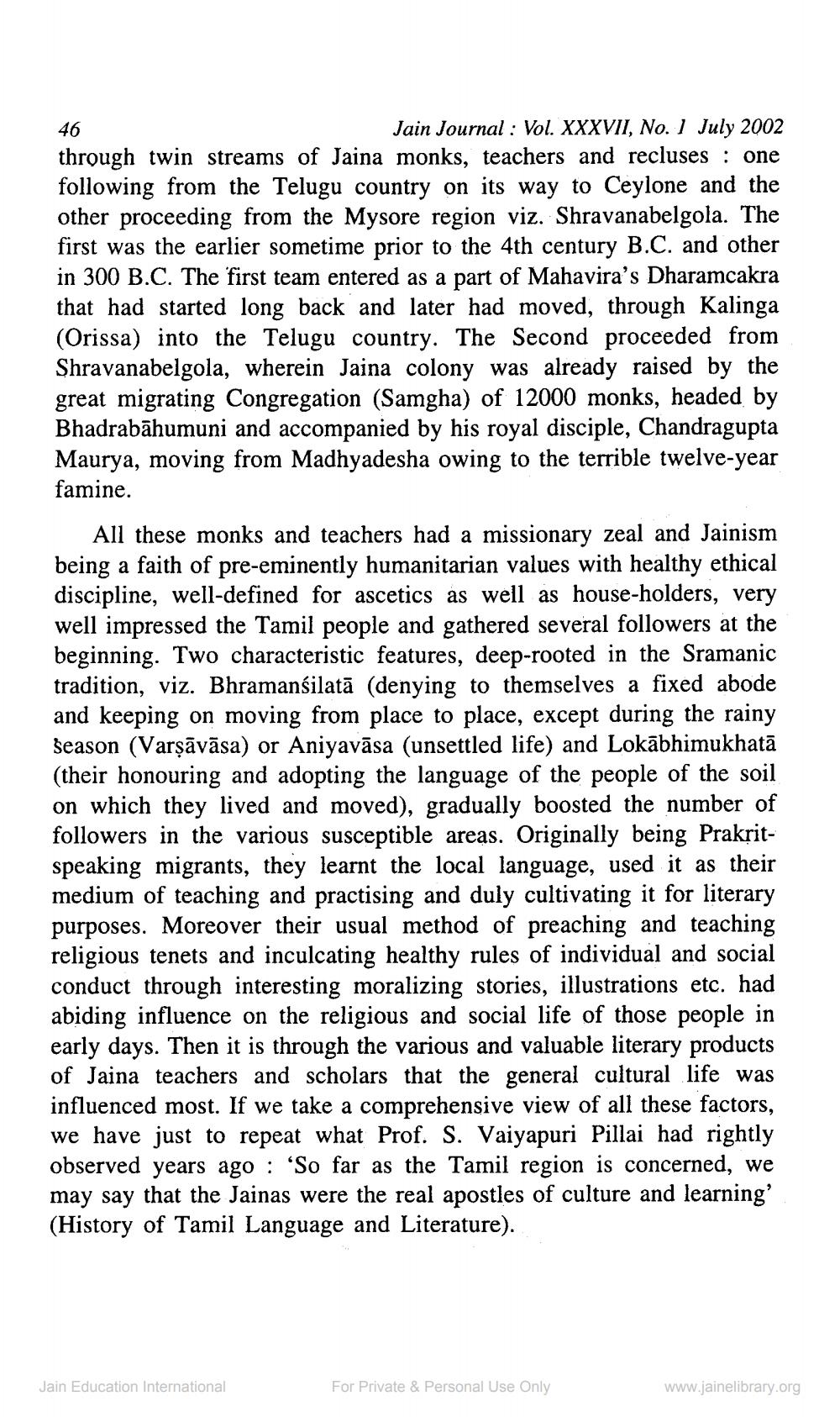________________
46
Jain Journal: Vol. XXXVII, No. 1 July 2002 through twin streams of Jaina monks, teachers and recluses: one following from the Telugu country on its way to Ceylone and the other proceeding from the Mysore region viz. Shravanabelgola. The first was the earlier sometime prior to the 4th century B.C. and other in 300 B.C. The first team entered as a part of Mahavira's Dharamcakra that had started long back and later had moved, through Kalinga (Orissa) into the Telugu country. The Second proceeded from Shravanabelgola, wherein Jaina colony was already raised by the great migrating Congregation (Samgha) of 12000 monks, headed by Bhadrabāhumuni and accompanied by his royal disciple, Chandragupta Maurya, moving from Madhyadesha owing to the terrible twelve-year famine.
All these monks and teachers had a missionary zeal and Jainism being a faith of pre-eminently humanitarian values with healthy ethical discipline, well-defined for ascetics as well as house-holders, very well impressed the Tamil people and gathered several followers at the beginning. Two characteristic features, deep-rooted in the Sramanic tradition, viz. Bhramanśilata (denying to themselves a fixed abode and keeping on moving from place to place, except during the rainy season (Varṣāvāsa) or Aniyavāsa (unsettled life) and Lokābhimukhatā (their honouring and adopting the language of the people of the soil on which they lived and moved), gradually boosted the number of followers in the various susceptible areas. Originally being Prakritspeaking migrants, they learnt the local language, used it as their medium of teaching and practising and duly cultivating it for literary purposes. Moreover their usual method of preaching and teaching religious tenets and inculcating healthy rules of individual and social conduct through interesting moralizing stories, illustrations etc. had abiding influence on the religious and social life of those people in early days. Then it is through the various and valuable literary products of Jaina teachers and scholars that the general cultural life was influenced most. If we take a comprehensive view of all these factors, we have just to repeat what Prof. S. Vaiyapuri Pillai had rightly observed years ago 'So far as the Tamil region is concerned, we may say that the Jainas were the real apostles of culture and learning' (History of Tamil Language and Literature).
Jain Education International
For Private & Personal Use Only
www.jainelibrary.org




